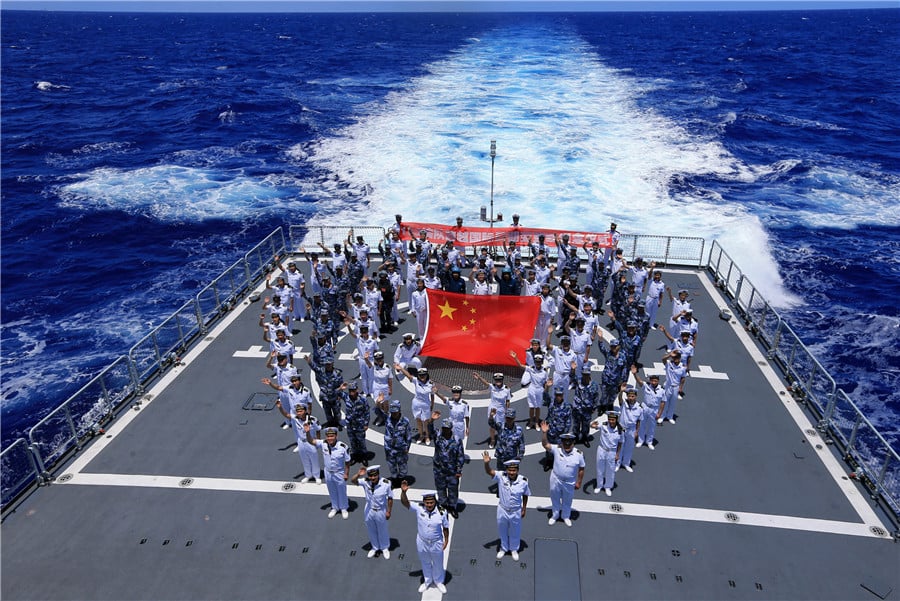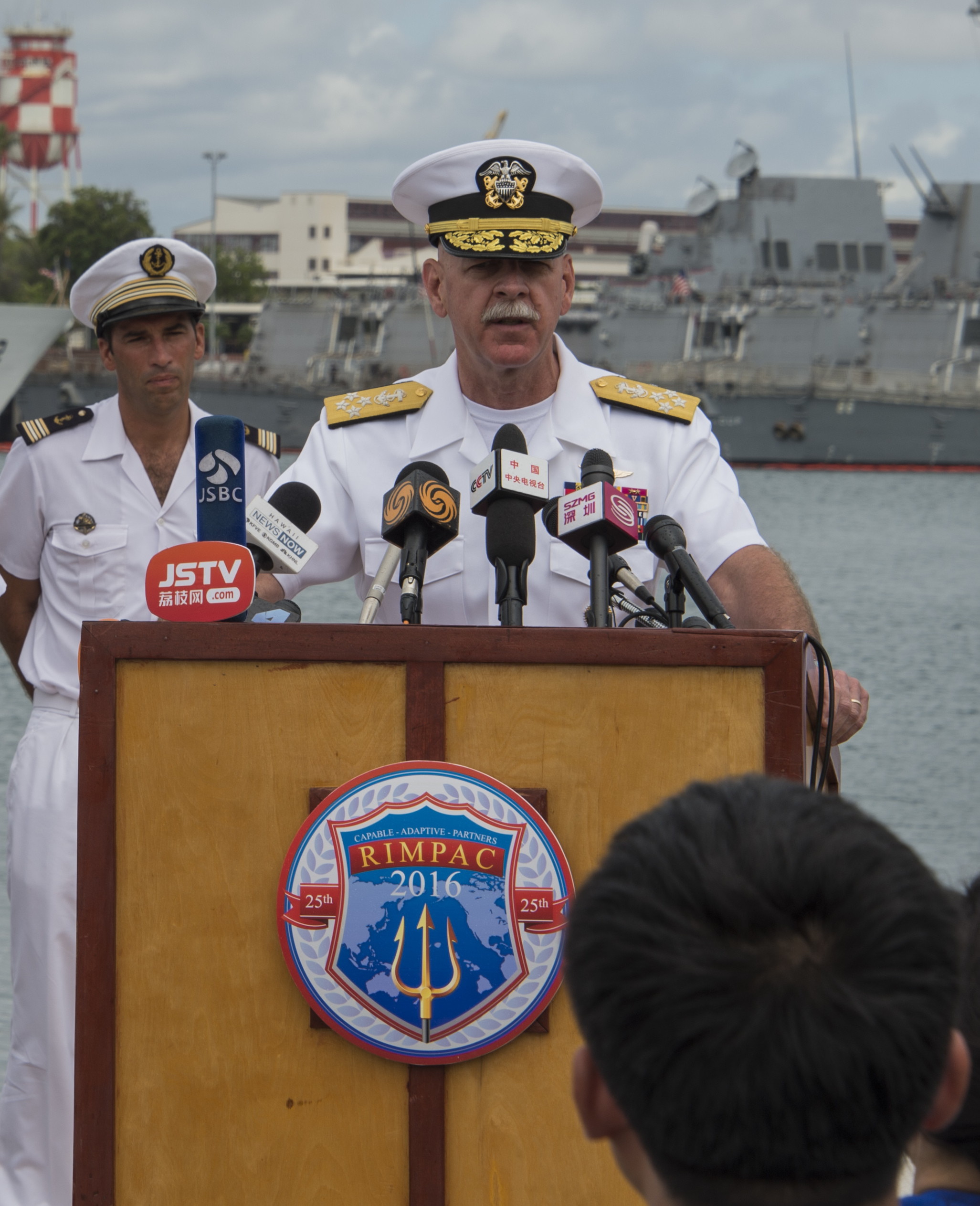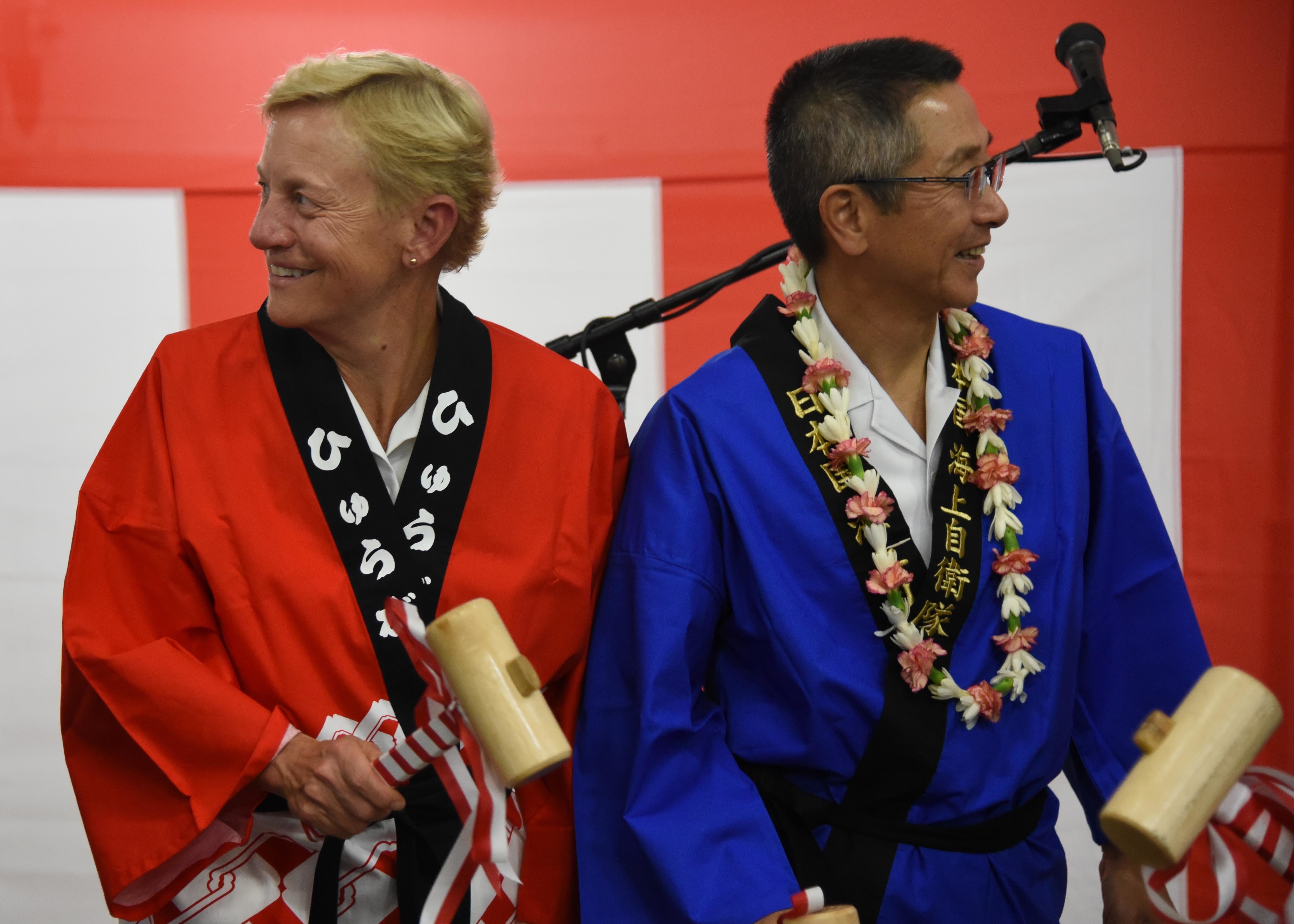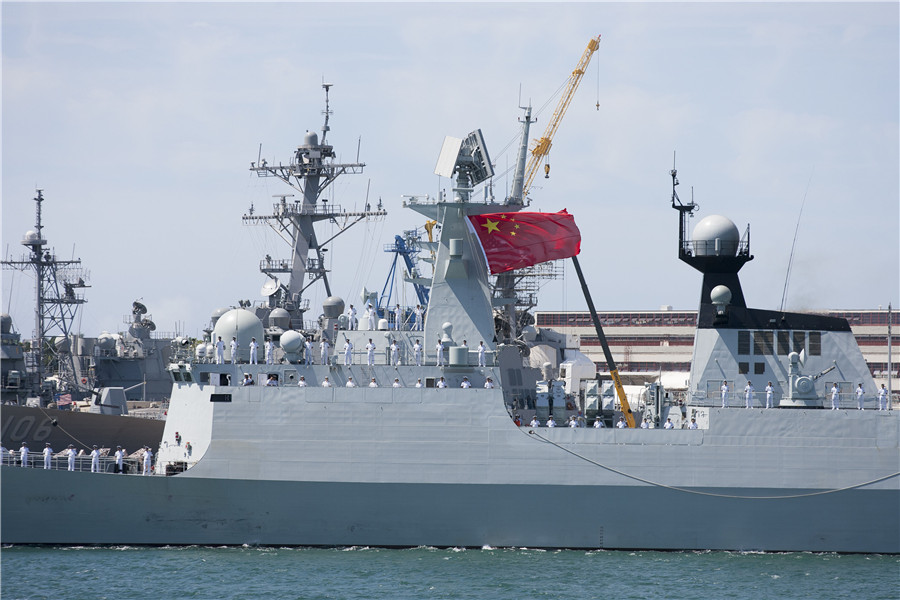
The Chinese naval delegation to the Rim of the Pacific exercises barred at least some Japanese sailors from touring their ships and only reluctantly invited members of the Japanese Maritime Self Defense Force to a reception aboard a People’s Liberation Army Navy warship, USNI News has learned.
Several sources told USNI News that during more than a week of in-port receptions aboard participating countries’ warships, the Chinese delegation skipped the July 2 Japanese reception. Additionally, the PLAN initially did not invite the JMDSF attendees to their reception until U.S. leadership made public comments about inclusion.
U.S. Pacific Fleet Commander Adm. Scott Swift and 3rd Fleet commander Vice Adm. Nora Tyson stressed that a multitude of countries working together was key to RIMPAC’s success and both stressed inclusivity in their July 5 opening day speeches.

“While these specific allegations were not addressed to leadership, both Adm. Swift and Vice Adm. Tyson have repeatedly reminded all participants that inclusivity is critical to the mission of RIMPAC,” Cmdr. Ryan Perry with U.S. 3rd Fleet told USNI News last week.
Several Japanese sailors attempting to tour Chinese ships during the subsequent RIMPAC open house day were turned away at the PLAN quarterdecks, two sources familiar with the snub told USNI News.
U.S. Navy officials did not comment on the incidents further. A Navy official told USNI News there have been no problems with the Chinese during the at-sea portion of exercise on Monday.
Last week, the commander of the Littoral Combat Ship USS Coronado (LCS-4) told USNI News operating with the Chinese has been positive.
“The level of partnership I’ve seen so far has actually exceeded my expectations, and I feel it’s been a mutually productive exercise. We’ve gotten to learn a little bit about how they operate and develop some of those useful insights that I’m sure will pay dividends once we get over to 7th Fleet,” Cmdr. Scott Larson said on July 21.
Attendees of RIMPAC 2014 – the first to which China was invited – told USNI News there were no issues with access to Chinese ships during the reception or the open house days.
Meet and Greet

As part of the biennial RIMPAC exercise, service members from more than 20 countries meet and mingle on one another’s ships during receptions and cultural exchanges, which are hosted prior to the start of at-sea operations.
Pictures published from this year’s event show U.S. Pacific Command commander Adm. Harry Harris pounding rice flour with a mallet on the Korean guided missile destroyer Sejong the Great (DDG-991), a mariachi band playing on a Mexican Navy amphibious ship during the California portion of the exercise, and a collection of specially-made RIMPAC sake boxes as a party favor on the Japanese helicopter destroyer JS Hyuga (DDH-181).
Several formal naval officers who participated in the receptions at past RIMPACs told USNI News that tensions between regional rivals – like Korea and Japan – are put aside during the social portion of the exercise.
What sources described as China’s snub to the Japanese at RIMPAC is reflective of the Beijing’s larger diplomatic playbook.
“The Chinese use these very blunt instruments that can get under the skin of others to exhibit unhappiness or dissatisfaction as how they’re being treated,” Michael Fuchs, former U.S. deputy assistant secretary of state for East Asian and Pacific affairs, told USNI News on Monday.
“Japan has been a favorite target of the Chinese and has been for some time, but are by no means alone.”
In military-to-military relations, China has had a history of altering plans at short notice based on Beijing’s political mood, Naval War College professor James Holmes told USNI News on Monday.

In the case of the U.S., China has canceled military-to-military relations for periods over arms sales to Taiwan and has revoked long-planned U.S. carrier port visits to Hong Kong with no notice.
“We’ve made the mistake of showing how much we covet military-to-military engagement, so they see canceling mil-mil engagement as a cudgel to beat us around the head when we annoy them,” Holmes said.
In May, the Stennis Carrier Strike Group was turned away from Hong Kong shortly after Secretary of Defense Ash Carter made a highly publicized visit to USS John C. Stennis (CVN-74) while it was in the South China Sea.
In 2013, the Chinese sent the guided missile destroyer Qingdao to Australia’s International Fleet Review for less than a weekend while other participants stayed several more days, Holmes wrote in The Diplomat. While docked in Sydney, the crew stayed on the ship and no tours were allowed.
Holmes said despite the alleged in-port reactions by the Chinese, Beijing values their inclusion in the exercise.
“I will say I’m surprised they haven’t pulled out of [U.S. military-to-military] contacts entirely considering how events in the South China Sea have unfolded recently,” Holmes said.
“Best I can tell, RIMPAC has gone off okay. They seem to place a lot of stock in that.”
RIMPAC 2016 runs until Aug. 4 and includes, “27 nations, 45 ships, five submarines, more than 200 aircraft and 25,000 personnel,” according to the Navy.





